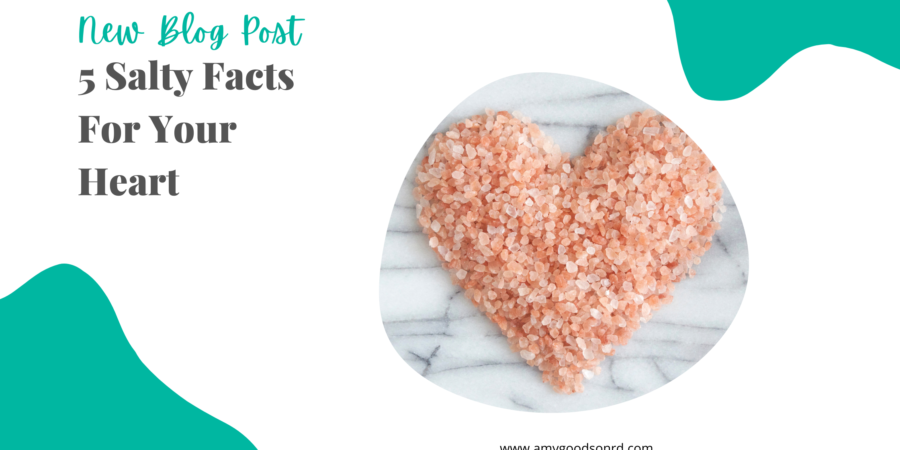Hopefully you shed a salty tear over your dozen roses, chocolate covered strawberries or breakfast in bed on Valentine’s Day this month, but that might be all the salt you should see during National Heart Month. Sodium (salt) can be an enemy of the heart if you are not careful. If you have high blood pressure or have a family history of high blood pressure, limiting sodium intake is ideal, as too much salt can contribute to increasing these numbers. This is especially true when high sodium intake is coupled with weight gain, being overweight or the lack of exercise. According to the American Heart Association, blood pressure should be 120/80 mm Hg or less. Getting blood pressure monitored on a regular basis is a good idea for all Americans.
Ideally, from a dietary perspective, you should consume less than 2300 mg of sodium a day and less than 1500 mg if you already have high blood pressure. Sound like a lot? Well, it is not. Many processed and frozen foods are laden with sodium as it helps preserve shelf life. In addition, restaurant and fast food is loaded with salt! Loaded! Some meals top 2300 mg of sodium in a single meal, more the less in a day.
However, there are some things you can do to decrease your sodium intake and reduce your risk for high blood pressure.
- Workout? Sprinkle!: If you workout a lot, it is possible that you need more salt in your diet. When you sweat you lose fluid in addition to sodium and potassium, known as electrolytes. Thus, if you sweat a good amount, you are losing sodium and need to replace it. Sprinkling salt on your veggies or eggs or choosing salty foods can help you replace what was lost during your workout.
- Dig up your herbs: Herbs can be a great way to season food without salt. Roasting your veggies with rosemary, using a homemade pesto as a sauce or flavor one of your favorite dishes with cilantro can all give you tons of taste sodium-free.
- Get spicy: Spices are another way to get flavor without sodium. In fact, a pepper’s main component that makes it hot, capsacin, has some research supporting that it may even speed up metabolism! So, get hot, get spicy, burn fat and skip the sodium!
- Choose whole: Whole foods like fruits and vegetables do not naturally have sodium in them thus making them a great choice. Processed and packaged foods top the charts with sodium and provide the largest amounts in most Americans’ diets. Thus, choosing whole, more natural foods will help you take in less sodium, provided you don’t pour on the salt.
- Get exercising: Exercise can help lower blood pressure by improving blood flow and helping with weight loss. Losing weight and adding exercise can help you improve your blood pressure levels as they work in concert to accomplish the same goal.


